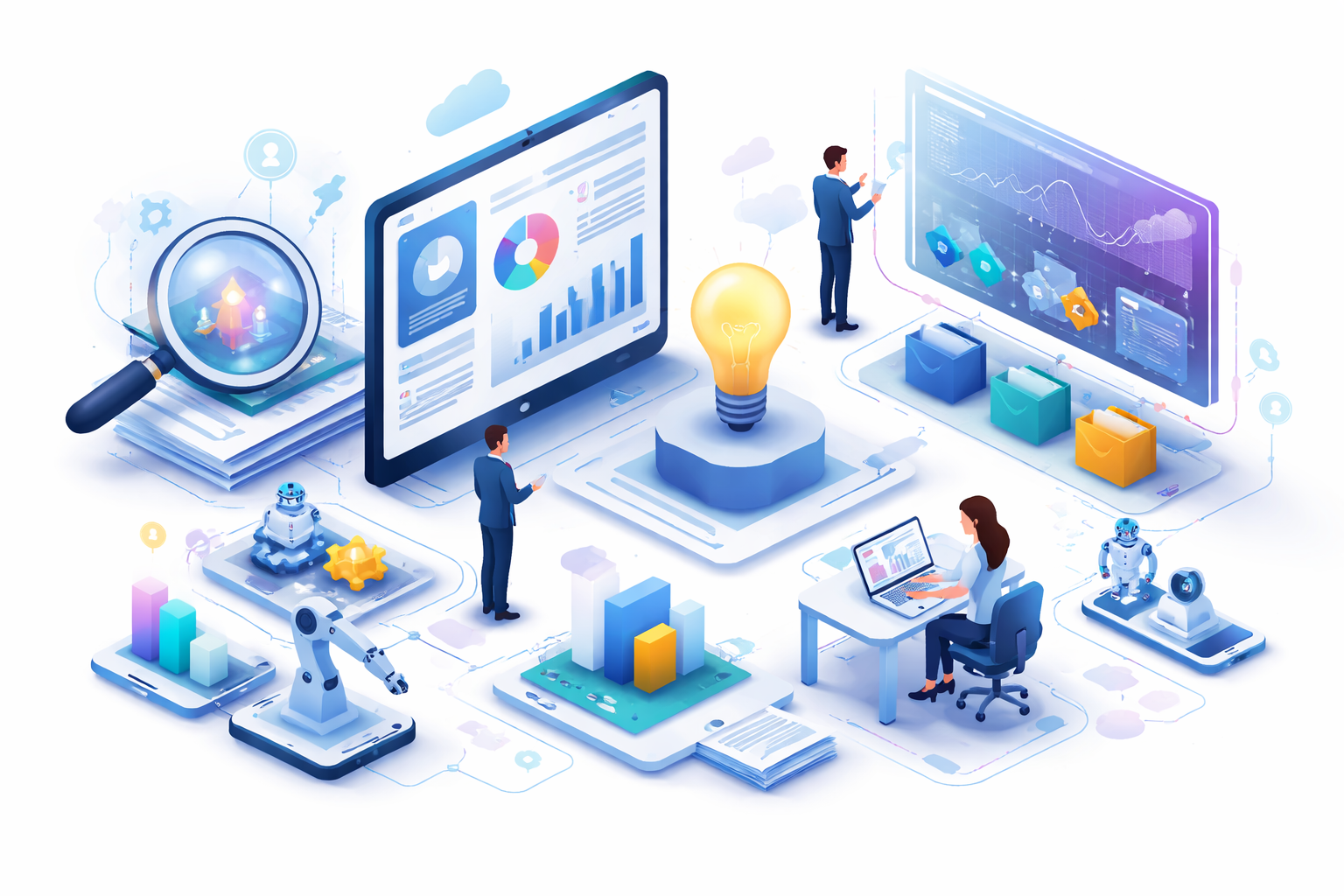In a significant milestone for the U.S. nuclear industry, the first newly built nuclear reactor in decades has begun operation at Plant Vogtle in Georgia. The successful deployment of this reactor not only marks a potential resurgence for the domestic nuclear sector but could also open a new vista of opportunities for investors and startups.
Nuclear energy, which has been a key part of the global energy mix since its commercial adoption in the 1960s, currently generates approximately 10% of the world's electricity. It holds the position of the second-largest source of low-carbon power worldwide. In the U.S., despite an aging infrastructure, nuclear power remains a critical energy source, with 92 operating reactors across 54 nuclear plants in 28 states.

The successful launch of this new reactor at Plant Vogtle might herald a new chapter for nuclear power in the United States, and potentially the world, underscoring its importance in the fight against climate change and our transition to a more sustainable energy future.
As we look towards a future with the ever-looming challenge of climate change, the quest for clean, reliable, and sustainable energy has become a global priority. Among the myriad of energy options, nuclear energy often takes a backseat, associated with lingering fears of safety and nuclear waste disposal. However, the dawn of advanced reactor designs and enhanced safety measures could potentially transform nuclear power into a viable, even critical, part of our sustainable energy future.
Nuclear Energy: An Overview
Nuclear energy harnesses the heat generated from nuclear reactions to produce steam, which then drives a turbine to generate electricity. Unlike fossil fuel-based power plants, nuclear power does not emit carbon dioxide or other greenhouse gases during operation, making it a potentially potent weapon in the fight against climate change.
Despite these advantages, nuclear energy's path has been strewn with hurdles, including high capital costs, public fears over safety and waste disposal, and challenges around the proliferation of nuclear weapons. However, with the advent of new technologies and increased understanding of nuclear energy's role, these hurdles are gradually being addressed.
Advanced Reactor Designs
The next generation of nuclear reactors, often referred to as Generation IV reactors, promise higher efficiency, greater safety, and reduced waste production. These reactors use different coolant materials, such as molten salt or gas, allowing them to operate at higher temperatures and thus offer higher thermal efficiency.
Moreover, some designs are intrinsically safe, meaning they can shut themselves down without human intervention or power supply in case of an anomaly. This feature significantly reduces the risk of accidents, alleviating some of the safety concerns surrounding nuclear power.
Reducing Nuclear Waste with Better Fuel Cycles
Addressing the problem of nuclear waste, scientists are developing advanced fuel cycles that can reuse spent nuclear fuel, thereby reducing the volume and radioactivity of waste. These "closed" fuel cycles involve reprocessing spent fuel to extract valuable elements like plutonium and uranium, which can then be used in new fuel.
An even more promising development is the advent of reactors that can use thorium, an alternative to uranium. Thorium is three to four times more abundant than uranium and produces waste that remains radioactive for a much shorter period.
Nuclear Energy and Climate Change Mitigation
As a low-carbon source of energy, nuclear power can play a significant role in mitigating climate change. By replacing fossil fuel-based power plants, we can substantially reduce our carbon emissions. The International Energy Agency estimates that to limit global warming to 1.5°C, 17% of the world's electricity must come from nuclear power by 2050, up from around 10% today.
In addition, nuclear energy provides reliable baseload power, meaning it can produce electricity continuously, unlike wind and solar power, which depend on weather conditions. This reliability makes nuclear power an important complement to renewable energy in achieving a stable, carbon-free grid.
The Role of Artificial Intelligence ( AI )
Artificial Intelligence (AI) can play a significant role in making nuclear energy safer and more efficient, as well as managing nuclear waste. Here's how:
1. Predictive Maintenance and Anomaly Detection: Nuclear plants contain thousands of individual components, and the failure of even a single piece could lead to serious consequences. AI can analyze data from various sensors placed throughout a nuclear power plant to detect anomalies that could be early warning signs of potential failures. This allows engineers to perform preventative maintenance before a major problem arises, enhancing the safety and operational efficiency of the plant.
2. Improved Reactor Designs: AI can help in designing more efficient and safer nuclear reactors. Machine learning algorithms can optimize reactor designs, maximizing their efficiency while ensuring safety under a wide range of operating conditions. AI can also play a role in developing novel materials with improved resistance to radiation, which can further enhance the safety and longevity of nuclear reactors.
3. Nuclear Waste Management: The management of nuclear waste is a significant challenge. AI can help optimize the handling, storage, and disposal of nuclear waste. Machine learning algorithms can predict the behavior of radioactive materials over time, allowing for safer storage solutions. AI can also assist in monitoring and detecting any leaks or breaches in waste storage facilities.
4. Enhancing Nuclear Security: AI can contribute to enhancing nuclear security by helping detect unauthorized activities or deviations. By analyzing data from various surveillance systems, AI can identify unusual or suspicious behavior, improving the security of nuclear facilities and materials.
5. Decommissioning and Cleaning: AI can assist in the decommissioning and clean-up of nuclear facilities. For instance, robots equipped with AI can be used to carry out tasks that are dangerous for humans, such as dealing with radioactive materials or operating in environments with high radiation.
AI, when applied thoughtfully and responsibly, holds significant potential to make nuclear energy safer and more efficient, thereby strengthening its role in our sustainable energy future. However, the successful application of AI in the nuclear industry requires careful consideration of ethical and safety issues, rigorous testing and validation, and robust regulatory oversight to ensure its benefits are realized without introducing new risks.
Looking Ahead
As the world wrestles with the urgent task of reducing greenhouse gas emissions, the potential of nuclear energy cannot be overlooked. While challenges remain, advancements in technology and a better understanding of its benefits indicate a brighter future for nuclear power. By integrating nuclear energy into a broader energy mix that includes renewables, we can build a sustainable, reliable, and low-carbon energy system capable of addressing the daunting challenge of climate change.
How can Traction Technology help?
Traction Technology is a ground-breaking platform engineered expressly to eliminate internal innovation silos, thereby enabling enterprises to seamlessly collaborate and align their business needs with promising technologies. By providing dynamic features that promote collaboration and innovation, they aim to accelerate digital transformation in the enterprise.
Here's how Traction Technology can help:
.png)
Discovery of Relevant Startups: Traction Technology helps established companies discover relevant advanced technologies aligned with their strategic goals and innovation areas. It curates startups based on different industries, technology trends, and areas of business interest, making it easier to find potential partners or investment opportunities and share this information across the enterprise.
Collaboration and Engagement Tools: Traction Technology offers tools that help manage the engagement process with startups. It provides a structured approach to evaluating, tracking, and managing interactions with multiple startups across multiple project and pilots, improving efficiency and collaboration.
Data-Driven Insights: The platform provides data-driven insights to help make informed decisions. This includes information on startup funding, growth indicators, customers and competitors, which can help in assessing potential startup partnerships.
Innovation Pipeline Management: Traction Technology aids in managing the innovation pipeline. It helps companies capture ideas and request and track innovation projects, monitor progress, and measure results in real time, promoting a culture of continuous innovation.
Track KPIs and Generate Custom Reports: Effortlessly track Key Performance Indicators (KPIs) with real time dashboards and generate custom reports tailored to your organization's unique requirements. Stay
.png)
ahead of the curve by monitoring projects progress and engagement.
By leveraging a platform like Traction Technology, established companies can gain a competitive edge, driving their digital transformation journey and adapting to the fast-paced business environment. It supports the integration of startup agility, innovation, and customer-centric approach into their operations, which is critical for success in the digital age.
About Traction Technology
We built Traction Technology to meet the needs of the most demanding customers, empowering individuals and teams to accelerate and help automate the discovery and evaluation of emerging technologies. Traction Technology speeds up the time to innovation at large enterprises, saving valuable time and money by accelerating revenue-producing digital transformation projects and reducing the strain on internal resources, while significantly mitigating the risk inherent in working with early-stage technologies.
Let us share some case studies and see if there is a fit based on your needs.
Traction Report Update: 23 ways AI could transform your business in 2023.
For more information
● Explore our software and research services.
● Download our brochure: How to Evaluate Enterprise Startups.
● Watch a demo of our innovation management platform and start your free trial.









.webp)